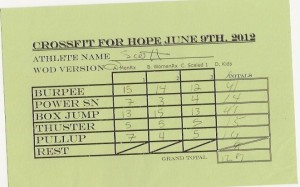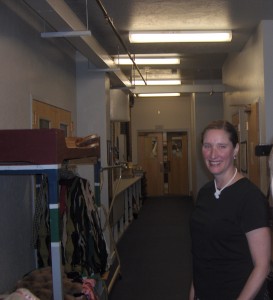Last Friday my wife and I went to see “Toy Story” at Phoebe Hearst Elementary School (hosted by the Phoebe Hearst 4th R after school program) . We went with some friends of ours, including the parents of one of the kids in the play. According the program there were 42 kids total. A cast of dozens, as it were.
I don’t recall ever having seen a serious review of an elementary school play. I’m going to take a wild guess and say that’s because school plays with K-6 graders don’t warrant the attention of critics. Putting it another way, no one would expect to see anyone construct a critical dialog that compares an elementary school play with a play that is professionally produced and cast with experienced actors.
In marketing one often hears the phrase “value proposition.” It’s a way of talking about the benefits that accrue to a consumer of a product. People buy things because it serves a purpose, and the “value proposition” is a way of describing that purpose.
Well just for a moment let’s “suspend our disbelief” and do a head-to-head value proposition comparison to Phoebe Hearst’s “Toy Story” and (for the sake of argument) “B” Street Theater’s production of “In Absentia .”
A play consists of the following elements:
- Action
- Dialog
- Actors acting
The value proposition exists individually in each audience member’s subjective appreciation, but let’s distill it down to:
- Entertainment
- Insight
In other words any given audience member has the opportunity to actively participate in the enjoyment of the play (whatever that means to them) and can have the added benefit of recognizing something useful about themselves, their society, or the larger world they live in. In this context “useful” means something that allows them the benefit of self-actualization. It could be a small thing, a mere sentiment, or an epiphany that changes their perspective forever.
Both “In Absentia” and “Toy Story” had actors acting, action, and dialog. They were both entertaining, and there was insight in both plays. Interestingly enough, in both cases the insight had to do with the power of sentiment. “In Absentia” had grief, the psychological pain of loss, and closure. “Toy Story” had the universally understood irrational sentiments of childhood joy, adventure, and wonder.
I’ll take another wild guess and assert that most people would think there was a big difference in the acting ability. Well yes there were differences, but acting wasn’t the big difference between the two plays. It was the blocking. The stage at Phoebe Hearst was small, there were lots of kids, props, and action, and it was hard to move around. The complexity of getting all those kids to hit their marks was an obvious challenge.
The acting in “Toy Story” was quite strong. I don’t recall either of the two lead actors (Samantha Macriss as “Woody” and Colton Winslow as “Buzz Lightyear”) dropping any lines. And they had a ton of lines! Jack Derby as “Andy” managed to capture the sly humor of his role, and he didn’t drop any lines either. Nate Dyba-Singer (“Mr. Potato Head”) and Ben Schwartz (“Rex”) had almost as many lines, and they did a great job too. Sid’s mom was hilarious (Michaela Wells.) Sid was diabolical (Ryan Kilmer.) Andy’s mom was entirely mom-like (Sonata Beasley.) The aliens were hilarious.
Both “Toy Story” and “In Absentia” were full length. Both plays had all the elements of action, dialog, acting, entertainment, insight. The big difference wasn’t the acting, or the entertainment, or the relevance, it was professional technique (blocking, staging, timing.) But of course that comes with practice.
Now the point here is not that the Phoebe Hearst production is, or is not, on the same level as the B Street Theater. The point is that both are relevant, and should be seen to be an important contribution to our social life. Both have a distinct value-proposition, and that is something that can be compared.
I am thrilled that the kids at Phoebe Hearst could adapt a major-motion picture to their abilities and environment. Those are some powerful kids. I wish them the very best of good fortune as they gain adulthood. Congratulations to the Phoebe Hearst team for directing, building, teaching and mentoring!
Cheers!



